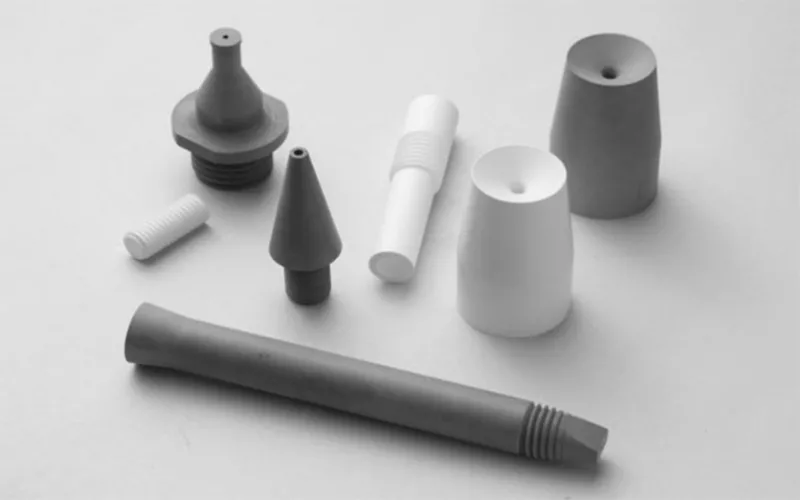Boron Nitrida cbn adalah keramik canggih yang dikenal karena sifat-sifatnya yang unggul. Kimia BN memiliki Boron-Nitrogen ikatan yang menghasilkan struktur yang berbeda. Dari struktur BN, salah satu struktur yang menarik adalah Kubik Boron Nitrida cbnMari kita coba memahami c-bn dan aspek-aspek terkaitnya.
Daftar isi
Boron Nitrida Heksagonal (h-BN)
- Struktur Boron Nitrida Heksagonal
- Sifat-sifat Boron Nitrida Heksagonal
- Aplikasi Boron Nitrida Heksagonal
- Apa itu Boron Nitrida kubik?
- Struktur Boron Nitrida Kubik
- Properti Boron Nitrida Kubik
- Boron Nitrida Kubik Vs Berlian
- Penggunaan Boron Nitrida Kubik
- Roda super abrasif – atau roda berlian c-BN
Boron Nitrida: Gambaran Umum
Boron Nitrida ditunjukkan dengan rumus kimia “BN.” Seperti yang disebutkan sebelumnya, Boron Nitrida ada dalam berbagai bentuk. Umumnya, letak Boron dan Nitrogen dalam kisilah yang menciptakan berbagai bentuk. Struktur Boron Nitrida. Beberapa di antaranya cukup terkenal seperti amorf, heksagonal, kubik dan Wurtzite.
Ketika berbicara tentang fungsionalitas, Keramik Boron Nitrida sangat mudah dikerjakan. Setelah dikerjakan, material ini tidak memerlukan sintering panas atau perlakuan stabilisasi. Selain itu, Boron Nitrida memiliki kapasitas panas yang lebih tinggi dan juga merupakan isolator listrik yang baik.
Untuk saat ini, mari kita coba memahami turunan BN, Boron Nitrida Heksagonal (h-BN) dan satu lagi Boron Nitrida Kubik (c-BN)
Boron Nitrida Heksagonal (h-BN)
Struktur Boron Nitrida Heksagonal
Boron Nitrida Heksagonal merupakan komponen dalam banyak produk industri seperti kosmetik. HBN memiliki struktur yang dikendalikan oleh ikatan kovalen. Namun, lapisan-lapisan di HBN mematuhi gaya Wander Waals. Geometri HBN yang seperti pelat merupakan alasan mengapa ia ideal untuk pelumasan.
Boron Nitrida Heksagonal memiliki unsur Boron dan Nitrogen yang terikat pada kisi-kisinya. Susunan ini memiliki tiga atom nitrogen yang terikat pada satu atom Boron. Kesamaan struktur sarang lebah inilah yang menjadi alasan analoginya dengan karbon. Selain itu, sifat mekanik, kekuatan kimia, dan isolasi listriknya disebabkan oleh ikatan segitiga planar.
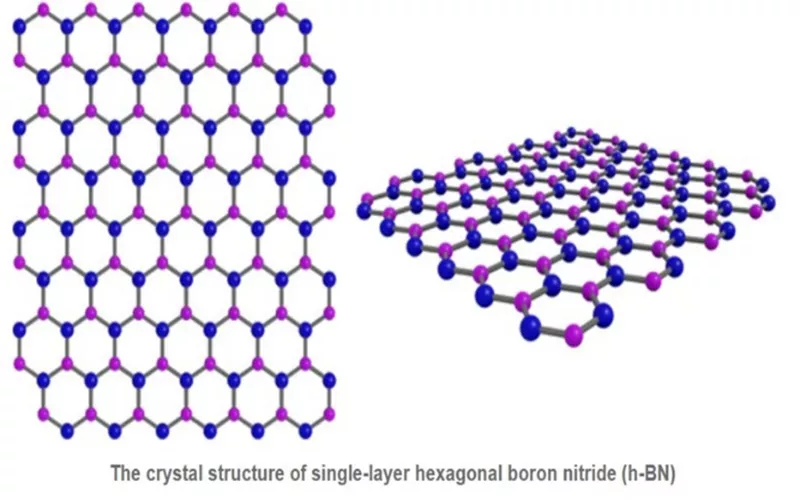
Sifat-sifat Boron Nitrida Heksagonal
Boron Nitrida Heksagonal umumnya diproduksi melalui nitridasi Borat Oksida pada suhu tinggi. Karena stabilitasnya lebih dekat dengan grafena, Boron Nitrida Heksagonal sering diakui sebagai keramik teknis paling maju. Beberapa sifat unggul Boron Nitrida Heksagonal adalah konduktivitas termalnya, dan koefisien gesekannya rendah.
Aplikasi Boron Nitrida Heksagonal
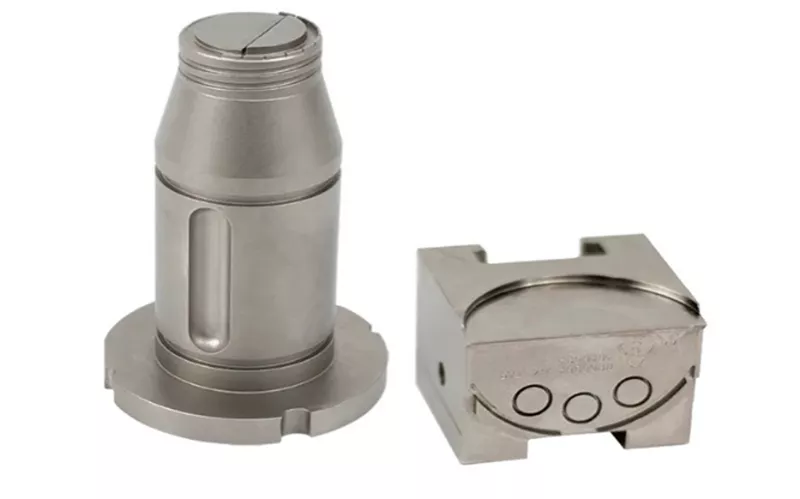
- HBN digunakan pada perangkat nanoelektronik sebagai pengganti substrat graphene
- Boron Nitrida Heksagonal dalam bentuk tipisnya digunakan sebagai pelapis yang tahan korosi
- HBN sering digunakan dalam pembuatan material sensor. HBN juga digunakan dalam penerowongan elektron karena nilai konstanta dielektriknya yang rendah.
Boron Nitrida Kubik
Apa itu Boron Nitrida kubik?
c-BN adalah turunan dari Boron Nitrida Heksagonal (h-BN) diproduksi di bawah suhu dan tekanan tinggi.
Spesialisasi terbesar dari c-BN adalah bahwa ia menempati tempat kedua sebagai material terkeras di dunia. Kekuatan mekaniknya Boron nitrida kubik populer dan setara dengan berlian. Ini adalah salah satu polimorf Boron yang paling populer Nitrida.
Struktur dari Boron Nitrida Kubik
Struktur dasar dari Boron Nitrida Kubik berbentuk kristal. Massa jenisnya sekitar 3,5 g/cm3 dan tampak berwarna kuning pucat atau transparan. C-BN mengikuti susunan atom Boron dan Nitrogen yang berselang-seling. Di sini, Boron-Nitrogen atom mengikuti ikatan kovalen yang merupakan alasan dasar kekerasan dan stabilitasnya.
Rumus Boron Nitrida Kubik diberikan sebagai c-BN. Ada dua jenis c-Bn populer yang tersedia di pasaran saat ini. Salah satunya adalah c-BN padat. boron nitrida kubik dan satu lagi polikristalin kubik Boron Nitrida.
Sifat Boron Nitrida Kubik
C-BN adalah semikonduktor brilian yang celah pitanya rentan terhadap perubahan tekanan yang diberikan. Perubahan celah pita ini membantu mereka unggul sebagai isolator listrik. Boron Nitrida Kubik Umumnya bersifat inert dan memiliki nilai konstanta dielektrik yang rendah. Konduktivitas termalnya sekitar 1300 KW/MK.
Ketika berbicara tentang reaktivitas, c-BN tetap tidak responsif bahkan terhadap bahan besi. Jangkauan optik yang ditangani oleh boron nitrida kubik bervariasi dari spektrum Ultra violet hingga spektrum tampak.
Boron Nitrida Kubik Vs Berlian
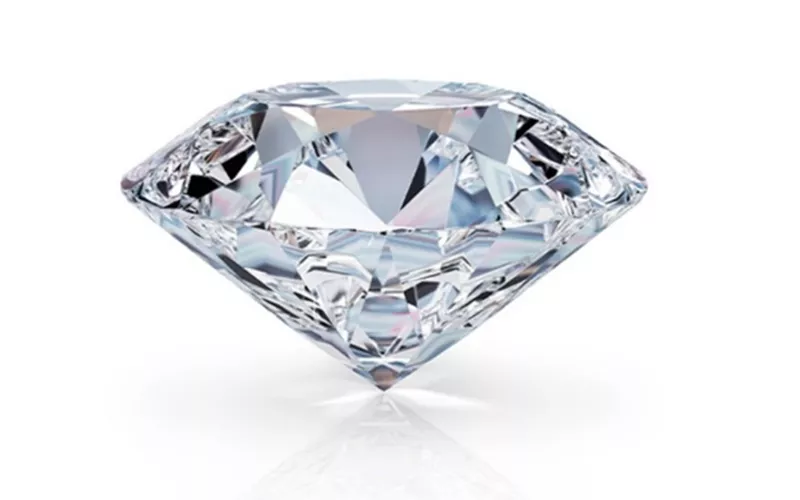
Meskipun tidak lebih keras dari berlian, kubik Boron nitrida memiliki tempat istimewa jika dibandingkan dengan berlian. Kekerasan Boron Nitrida Kubik adalah 4500 Kg/mm2 sedangkan intan memiliki kekerasan sekitar 600 Kg/mm2. Nilai modulus young dan bulk juga berada pada rentang yang sama yaitu 800 – 1000 dan 370 – 450.
Selain itu, jika menyangkut struktur, seperti berlian, c-BN memiliki dua atom basa yang berbeda. Kesamaan antara intan dan c-BN umumnya disebabkan oleh kemiripan struktur yang dimilikinya.
Penggunaan Boron Nitrida Kubik
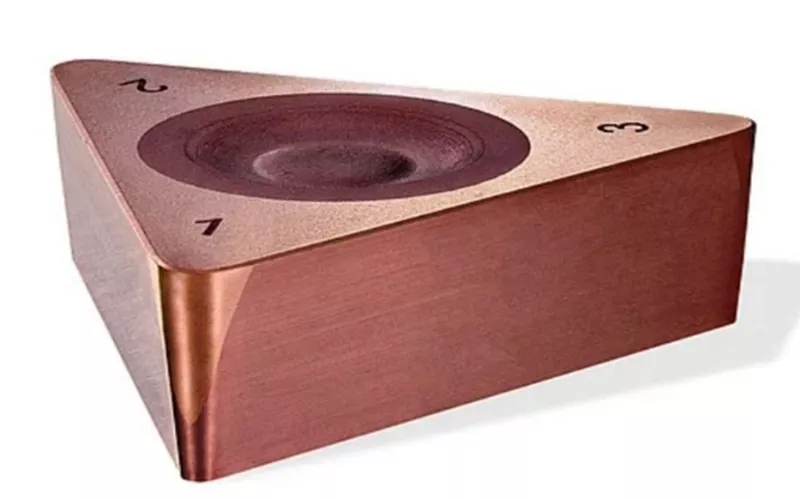
bahan alat pemotong cbn
Boron Nitrida Kubik menunjukkan modulus Young dan Bulk yang lebih besar daripada Boron Karbida dan Silikon Karbida. Hal inilah yang berkontribusi besar terhadap kekerasan Boron Nitrida kubik. Kekerasannya membuatnya cocok sebagai bahan abrasif dan membantu mereka berfungsi sebagai bahan alat pemotong cbnUmumnya c-Bn Padat digunakan untuk aplikasi pemotongan dan jenis berpori untuk kebutuhan penggilingan.
Sifat inert dari Boron Nitrida Kubik juga Membantu mereka berfungsi sebagai material pemotongan dan pemesinan. Tidak seperti intan, c-Bn tidak bereaksi terhadap besi. Namun, c-Bn konvensional memerlukan manipulasi untuk memanfaatkannya dalam aplikasi pemotongan. Hal ini umumnya dilakukan selama konversi h-Bn menjadi c-Bn selama sintering.
cbn sebagai isolator listrik
Selain kekerasan Boron Nitrida Kubik juga unggul dalam isolator listrik. Hal ini disebabkan oleh celah pita yang lebar.
cbn dalam aplikasi semikonduktor
Dengan melapisi aluminium dan logam Grup 8, C-BN Fungsi menjadi wastafel populer dalam industri elektronik. C-BN digunakan sebagai penyerap panas dalam laser, perangkat mikroelektronik, dan LED.
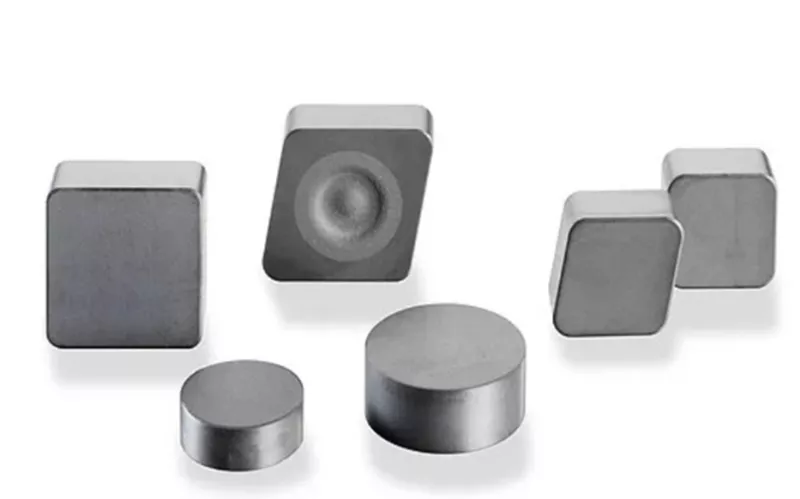
Boron Nitrida Kubik juga menambah nilai selama sintesis semikonduktor untuk mendapatkan tipe p dan N melalui doping yang tepat. Material yang umum digunakan untuk doping adalah Silikon atau Berilium. Semikonduktor ini bekerja pada suhu tinggi dan digunakan dalam sensor UV.
roda gerinda c-BN

Penemuan roda gerinda c-BN memerlukan manufaktur presisi karena peningkatan efisiensi. Roda yang terbuat dari c-BN berkontribusi pada industri seperti kedirgantaraan, mesin, produksi peralatan, dan mobil. roda gerinda c-BN juga menawarkan kekerasan tinggi dan kinerja yang baik dibandingkan dengan SiC dan Alumina. Mereka memastikan integritas struktural pada suhu yang lebih tinggi dan tidak mengalami degradasi.
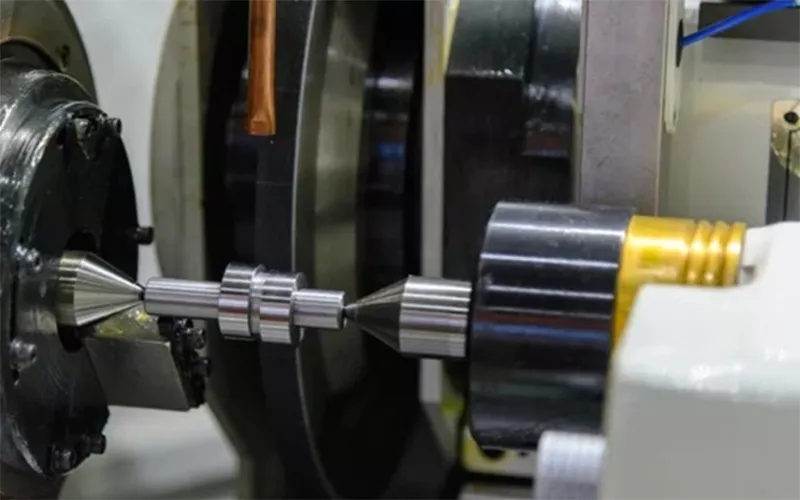
Roda-roda c-BN Dapat menahan suhu tinggi dan menangani jumlah panas yang dihasilkan selama proses. Ketahanan terhadap keausan juga menguntungkan secara ekonomi saat mempertimbangkan roda gerinda c-BN. Roda gerinda c-BN menawarkan Permukaan akhir yang halus dan mencegah pemborosan benda kerja. Hal ini juga memastikan waktu siklus yang lebih singkat karena pekerjaan dilakukan dengan cepat dan tepat.
Roda super abrasif – atau roda berlian c-BN
Roda super abrasif berbeda dari roda konvensional Sic dan Alumina. Roda ini terbuat dari kombinasi c-Bn dan berlian. Roda super abrasif menawarkan konduktivitas termal yang lebih baik sehingga membatasi kenaikan suhu benda kerja. roda berlian c-Bn juga menawarkan pemotongan dengan akurasi dan presisi tinggi yang berkontribusi pada masa pakai yang lebih baik.
Kesimpulan
Boron Nitrida Kubik diinginkan dalam sains modern dan manufaktur material. Mereka kompetitif jika dibandingkan dengan material seperti berlian. Mereka unggul dalam sifat-sifat seperti kekerasan, kekuatan, dan isolasi listrik. Celah pita yang lebar, sifat inert, konstanta dielektrik yang rendah, dan spesialisasi optik adalah faktor-faktor keunggulan lainnya.
